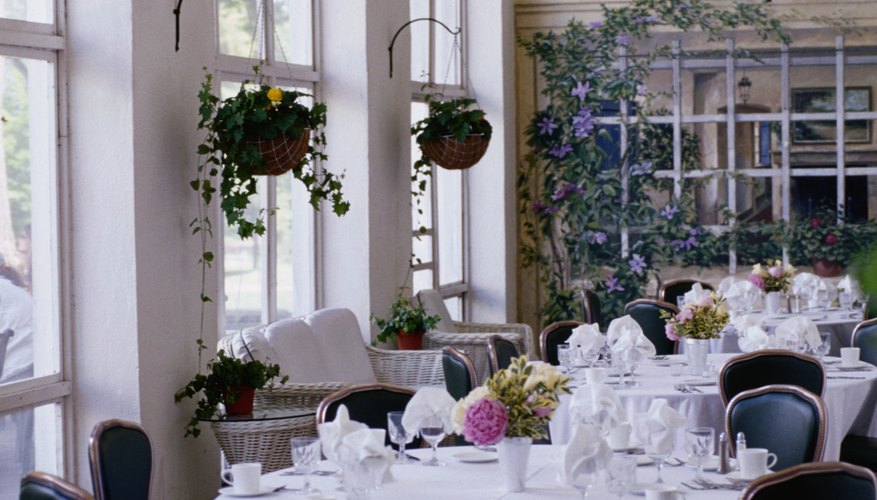Catering is a sub category of the food industry which provides food services at remote sites. It spans a full range of services, from providing sandwich lunches through to full-service events such as weddings, conferences and banquets. It is not the same as a restaurant business. Successful catering firms hire staff such as waiters on an event basis, and tailor their food purchases to the number of events they have scheduled. Without fixed premises and staff overheads, their profit margins are typically higher than those of a restaurant.
Costs and Profit
Profit calculations start with an understanding of costs. In the hospitality and catering sector, the two major heads of cost are food and labour. According to Joyce Weinberg, author of The Everything Guide to Starting and Running a Catering Business, an experienced, efficient, smoothly operating caterer can expect to spend 27 percent to 29 percent of sales on food costs, 9 percent on overheads and 16 percent to 17 percent on labour. This should result in a gross profit margin of 8 percent to 12 percent.
- Profit calculations start with an understanding of costs.
- According to Joyce Weinberg, author of The Everything Guide to Starting and Running a Catering Business, an experienced, efficient, smoothly operating caterer can expect to spend 27 percent to 29 percent of sales on food costs, 9 percent on overheads and 16 percent to 17 percent on labour.
Variables
Some types of catering businesses incur higher costs than others. A full-service wedding caterer who applies a theme to the menu, gives menu choice and offers specialist meal options such as halal, vegetarian/vegan, gluten free or organic produce can expect to incur higher food costs. This will lower the profit margin, unless savings can be made in other area such as labour costs, or the cost to the customer is increased.
Threats to the profit margin
Wastage reduces profitability. This occurs when too much fresh produce is bought and not enough sold. The sector is seasonal, because of reliance on outdoor events. A caterer's income stream can be sporadic. Employing casual labour reduces costs but risks a skills shortage. Caterers need to diversify their services to avoid slack demand.
- Wastage reduces profitability.
- Caterers need to diversify their services to avoid slack demand.
Comparison with other food operators
Caterers have better profit margins than other business types in the food sector. According to Catering Mentor, a well run restaurant can expect a profit margin of 5 percent to 8 percent.
